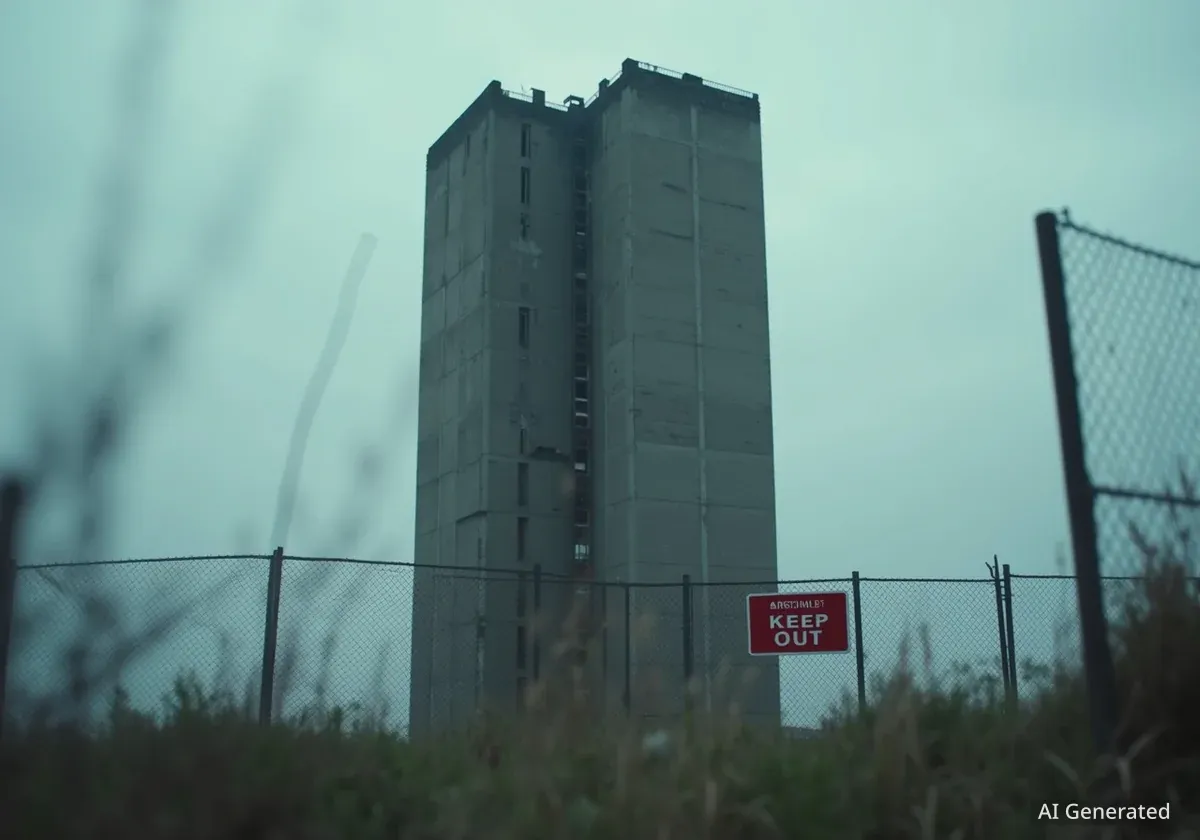The future of Vine House, a 14-storey tower block in Seaforth that has been empty for 22 years, remains uncertain as Sefton Council prepares to make a key decision. The derelict building has become a source of significant concern for local residents due to structural decay, anti-social behaviour, and severe pest infestations.
Key Takeaways
- Vine House, a 14-storey tower block on Kepler Street, has been vacant since 2003.
- Residents report persistent problems with anti-social behaviour and rat infestations.
- A council report earlier this year proposed a £1.5 million demolition, citing structural issues.
- Sefton Council is now scheduled to decide on a potential sale of the building on October 2.
Two Decades of Neglect in Seaforth
Vine House was constructed during the 1960s as part of a nationwide trend for high-rise residential buildings. However, the property was decommissioned in 2003 and has stood empty ever since, casting a long shadow over the surrounding community on Kepler Street.
For more than two decades, the abandoned structure has deteriorated significantly. Its corrugated façade is damaged, windows are broken, and the site has become a hotspot for unwelcome activity. The building's condition has led to serious environmental health concerns for those living nearby, including families with children attending the adjacent Our Lady Star Of The Sea R C Primary School.
A Legacy of the 1960s
Many high-rise tower blocks built in the mid-20th century across the UK faced similar challenges. Initially seen as a modern solution to housing shortages, many fell into disrepair over the decades due to maintenance costs and changing housing preferences, leading to widespread demolition or regeneration projects.
Impact on the Local Community
Residents living in the vicinity of Vine House have voiced their frustrations about the ongoing problems stemming from the derelict site. The building's state of decay has created an ideal environment for vermin, leading to widespread infestations in the area.
One long-term resident, Mr Monaghan, who has lived in the area for twenty years, described the extent of the problem in February.
"There’s all types of feral things running in and out of that block because it’s nice and warm and cosy for them and they’ve set up home. There’s families of rats walking arm in arm around here."
His comments highlight the severe impact the neglected building has on the daily lives of local people, who have endured these conditions for years with no resolution in sight.
Council Considers Demolition and Other Options
Sefton Council has acknowledged the problems associated with Vine House. A financial report presented to the cabinet in February 2025 detailed significant issues and potential costs. The report revealed that approximately £100,000 has been spent on works related to the building in the last three years alone.
More alarmingly, the document noted a "potentially significant structural issue" affecting the external brick columns, where major cracking has appeared. In a review of options conducted in September 2024, demolition was identified as the most viable solution.
Proposed Demolition Costs
The Sefton Council Capital Programme report for 2025/26 – 2027/28 included a proposal for £1.5 million to cover the costs of demolishing Vine House.
A Shift in Strategy
Despite the earlier recommendation to demolish the tower block, the council now appears to be exploring other avenues. The focus has shifted towards the potential disposal of the asset. This change in direction has prolonged the uncertainty for residents awaiting a final decision.
The matter was discussed at a Sefton Council Regeneration and Skills meeting on September 16, where members reviewed the local authority's 'Community Assets Policy'. This policy provides a framework for how the council can transfer or sell its assets in a transparent and legally compliant manner.
Decision on Building's Fate Looms
The ultimate fate of Vine House is expected to be decided at an upcoming Sefton Council cabinet meeting. According to the council's 'Forward Plan' for October 2025 to January 2026, a decision on whether to sell the property is scheduled for October 2.
This crucial meeting was originally planned for September 4 but was postponed, with the council citing that 'work was ongoing with the asset disposal'. This delay means the community must wait longer for a resolution to a problem that has blighted their neighbourhood for over twenty years.
Whether the council proceeds with a sale to a private developer or reverts to the previously recommended demolition plan, residents are hopeful that a definitive course of action will finally be taken to address the long-standing issues caused by the abandoned tower.





